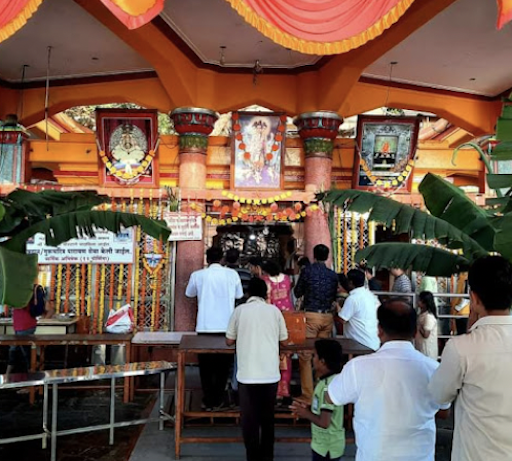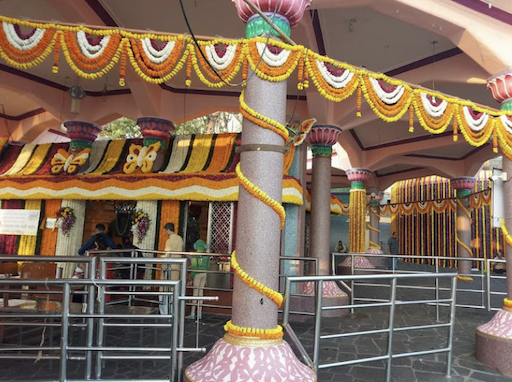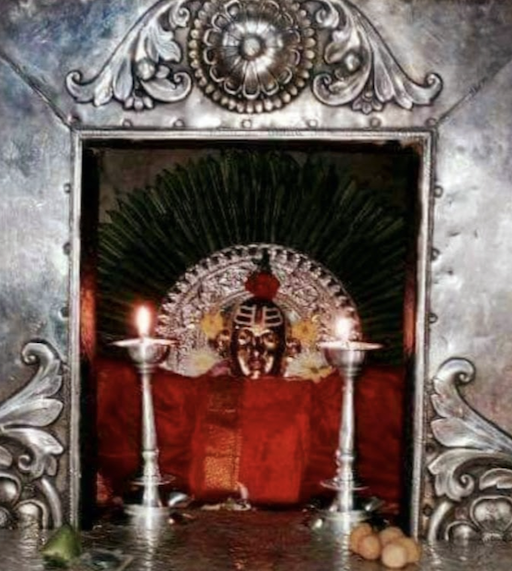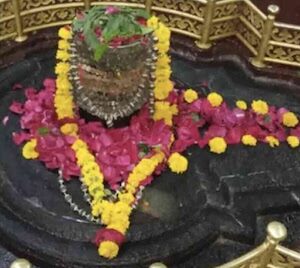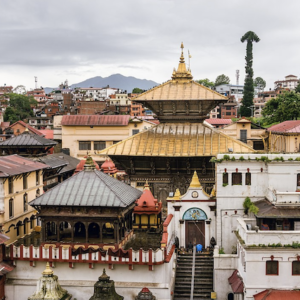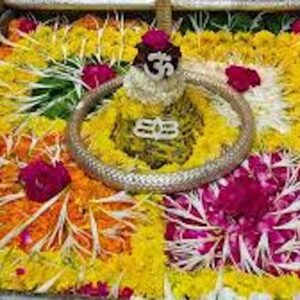This is a consecrated temple of Guru Datta.
There is a place to sit and meditate. You can go into meditative states here effortlessly.
How to Get there
The temple is 21.5 kms South of Sangli.
Map:
https://maps.app.goo.gl/RDeWci2gqF4oc2VK6
About Narsimhawadi Kshetra
Shri Narasimha Saraswati Swami Dattadeva temple is situated at Narsimhawadi, Kolhapur district in Maharashtra which is situated about 30 km from SANGLI. It is popularly known as “Narsobachi Wadi”or Narasimha Wadi
Shri Nrusinha saraswati swamy stayed in this area with full of Oudumber trees for 12 years and he flourished this region. Shri Nrusinh saraswati while travelling after completing Chaturmas at Oudumber, reached this place . The place has natural beauty and refreshing scenery due to confluence of Krishna and Panchaganga and thick forests of Audumber trees. The Paduka established by Swami are there in that temple. The Pancha Ganga Sagar, which is the confluence of the five holy rivers, Siva, Bhadra, Kumbhi, Bhagwati and Saraswati, where they all meet and merge in the Krishna river.
Following is an extract from Guru Charitra Chapter 18:
Sri Narasimha Saraswati visited the Pancha Ganga Sagar. Here is the temple of Amareshwar on the other bank of river and hence the place is called as Amarapur. Nearby is the Sakti Teertha, where reside Sixty-four Yogini Shaktis, serving and worshipping Amareshwar, but unseen by others. Nearby was Papa Vinasini and other holy Teerthas. Sri Krishna Saraswati stayed at Amarapur for 12 years. This place came to be later called as Narsobawadi (Narsobachi Wadi), after Sri Narasimha Saraswati.
From Guru Charitra Chapter 19:
“I am leaving my Padukas here. I will be ever present where my Padukas are worshipped. Whatever wishes to be prayed for, offering worship to the Padukas, they will be granted and fulfilled.” – Sri Narasimha Saraswati.
There is an Audumber tree at the center below which Shri Guru used to sit, and the Paduka are established there facing Krishna river there is a open space in front.
The worshippers sit there & adore & worship the Paduka in a sancturay (Gabhara). The door of the Gabhara is very small. The devotee hall in which Paduka are placed has silver metal lining on face portion. At center there is Ganeshpatti on top & sides Peacock, Jay-Vijay images & on upper side Nrusinh Saraswati’s image is carved with silver metal-cover. Main worshippers sit here & do worship rituals.
Narsobawadi is a holy place of pilgrim located on the banks of river Krishna. River Panchganga meets river Krishna at this holy place. Shri Narasimha Saraswati was considered as ‘Siddha Purusha’ (Perfect, almost Godlike being) with Divine powers of healing physical ailments and alleviating worries of his devotees. When people were in utter despair, Shri Nrisimha Saraswati brought about a religious and spiritual renaissance and restored their morale. The Master can be seen even today by the virtuous and the devout. In fact, he has been blessing devotees with his divine acts (leelas) on countless occasions. The aspirations of those who worship him there with true love will be fulfilled. Indeed, the Lord is ever present with those who incessantly adore him. The miraculous experiences of such will ever remain hidden in their own hearts. He is the granter of prayers.
Adhyayaas 20 and 21 of Shree Gurucharitra explaining that how the Padukas of Shreeguru of Narsobawadi are responding to the prayers of the devotees. 20th Adhyay describes that even after the Guru Nath’s leaving from Panchaganga Kshetra (Narsobawadi), how his Padukas left under the Audumber Tree continued to respond to the prayers of devotees as per the assurance given to the Yogini-Ganas by Guru Nath. A woman was freed from the Brahma Rakshasa, who caused death to all the children born to her again. The women after worshipping Shri Guru had a dream in which Shri Guru gave her 2 coconuts and as a result 2 sons were born to her. But one of the sons, just when the parents were planning to do his Upanayanam ceremony, dies. Guru Nath in the guise of a Yogi, appears to her and gives philosophical teaching about the inevitability of death and tries to reconcile her to the event, but the woman remained inconsolable..
21st Adhyay describes how Shri Guru Nath, moved by pity at the sorrow of the woman, brings back to life the dead child.
Read More
https://www.sreedattavaibhavam.org/shree-kshetra-narasimha-wadi/

